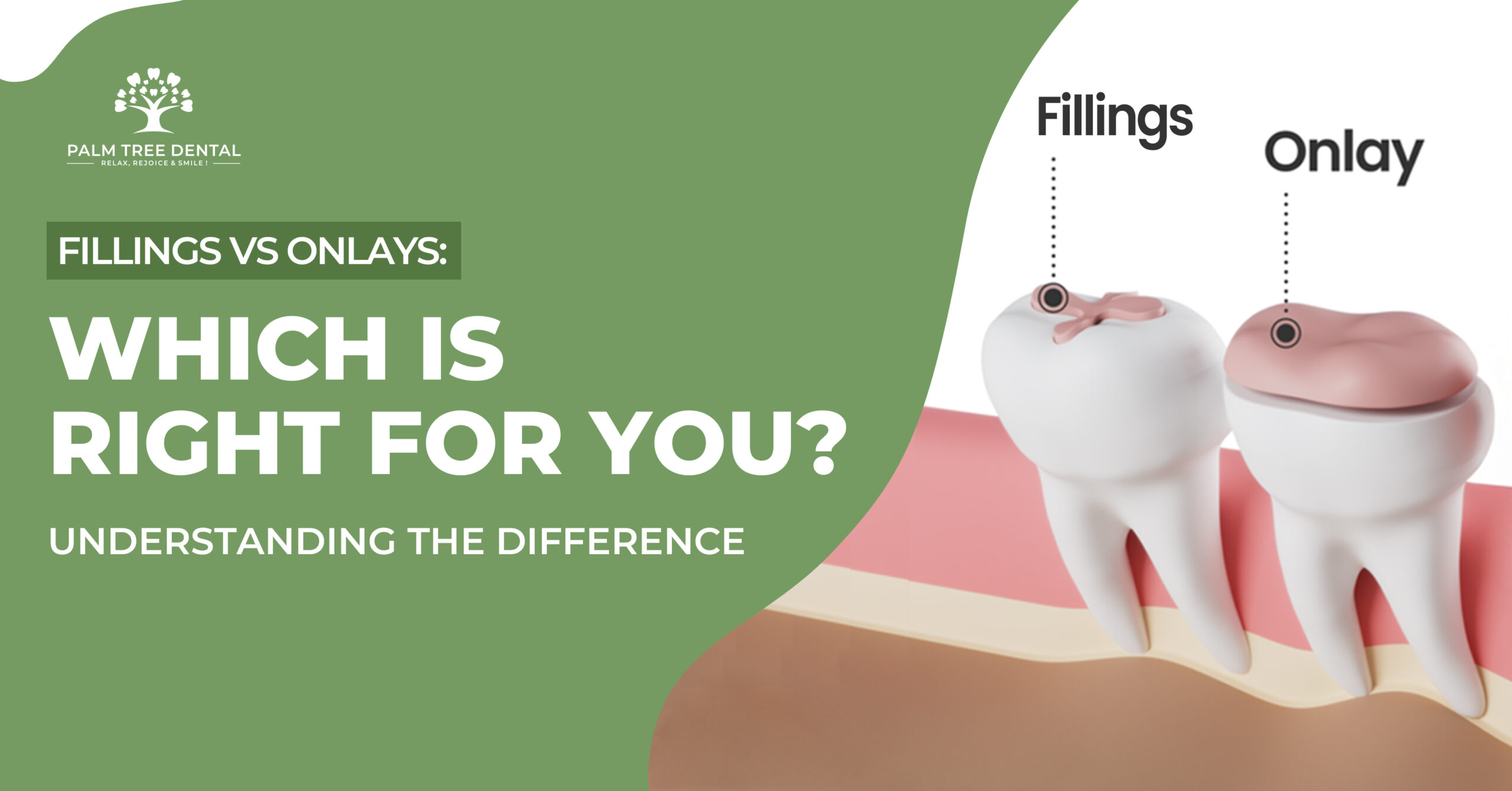Modern dentistry offers numerous amazing options when you need to restore a damaged tooth. However, there are a few common ones that are more useful than others. Those generally are onlays and fillings.
Both these treatments help to restore the structure and function of your tooth. However, they have lots of differences regarding applications and materials. So, to know the better option for you, let’s discuss their differences below.
Fillings vs Onlays: Which is Right for You?
In this blog, we will talk about the main differences between these two options and explore which one will be ideal for you.
Dental Fillings
In dentistry, dental fillings are one of the most common treatments. With this, doctors can treat small to moderate areas of damage in your tooth.
During this procedure, your dentist will start by taking out the damaged part. Then, he/she fills the vacant space with a certain material. That may be amalgam, composite resin, or even porcelain. However, recently, composite resin has become very popular among patients. The reason is that this component has aesthetic appeal.
When Will Fillings Be Ideal?
A dental filling will be ideal when:
- Your tooth damage doesn’t go beyond the tooth cups.
- Your cavity is quite small or moderate in size.
- Your time is a crucial factor.
- Your target is to undergo a quick fix and a very minimum invasion.
Onlays
Onlays are also popular as partial crowns. These are ideal when your tooth faces a serious damage. Doctors cannot restore that decay with a simple filling. However, your tooth doesn’t need a full crown. In those cases, your dentist will suggest that you choose dental onlays.
How Do They Function?
In a dental lab, onlays are created by experts. Many can create it with CAD/CAM technology. Onlays can easily cover one or multiple cups of a tooth. Also, professionals can place these directly into the tooth. In this sense, it is quite different than fillings. So, you may say that, dental onlays are created outside the tooth and then placed onto the tooth.
When You May Use Onlays?
You may need onlays when:
- A large part of your tooth has been damaged.
- You want a durable option.
- When you don’t need a full crown.
So, these are the common differences between dental onlays and fillings. However, contact your dentist before choosing any one option. For some more information, call Palm Tree Dental.

